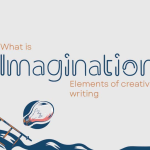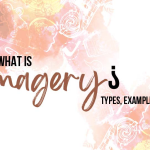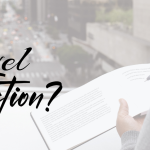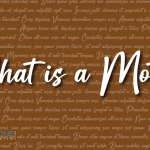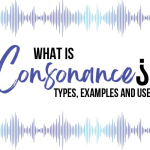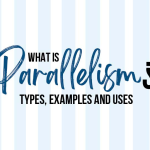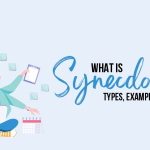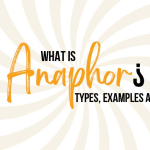“If dreams were a bird, it would fly high to watch the world from above, how big things look small when accomplished.”
― Arshia Mittal
Arshia Mittal compares her dreams to a bird. The phrase “it would fly high” suggests that dreams have agency and can take action on their own, in this case by flying.
The phrase “watch the world from above” further suggests that dreams have the ability to see and observe as a bird might.
The Saying “how big things look small when accomplished” suggests that dreams have the ability to perceive and understand the world around them and to compare and contrast different things. That my bibliophiles is personification.
Personification is a figure of speech that describes non-human things or abstract notions as if they were human. This can be done to give these non-human items or notions human-like traits or to make complex ideas more simply conveyed to an audience.
In literature, poetry, and song lyrics, personification is frequently employed to give depth, passion, and descriptive detail to a piece of work.
Personification can be used to describe the sun as a “golden giant” or the wind as a “whispering breeze.”
Personification can serve to make writing more interesting and approachable for readers, as well as a strong tool for communicating complicated concepts or emotions in a more accessible manner.
Overall, as a literary device, many people have a doubt what is personification? serves to provide readers with imagery and links between the live and inanimate. Personification thus enables writers to convey content in a creative and artistic manner.
These figures of speech help the reader understand concepts and comparisons, decipher symbols and themes, and appreciate language.
Below are some instances of how personification can be used effectively:
- Demonstrating creativity: Personification can be a creative way to describe things or concepts, and can help writers to think outside the box and come up with unique and original ways of expressing themselves.
- Exercising poetic skill: Personification is often used in poetry, as it can add depth, emotion, and musicality to a piece of writing. By personifying non-human things or concepts, poets can create vivid and evocative imagery that resonates with readers.
- Creating humour: Personification can also be used to create humorous or lighthearted effects, by giving human-like characteristics to inanimate objects or abstract concepts.
- Enhancing imagination: Personification can help to stimulate the imagination and encourage readers to think more creatively and imaginatively. By personifying non-human things or concepts, writers can help readers to see the world in a new and different way, and to think more deeply about the nature of things.
You may also read: Top 10 Rhetorical Devices Every Writer Should Know
You may also: 100+ Adjectives That Start With N (With Examples & Definitions)
Here are a few examples of personification from books:
- “The wind howled through the trees, shaking the leaves like a child throwing a tantrum.” (The Lion, the Witch and the Wardrobe by C.S. Lewis)
In this example of personification, the wind is given human characteristics by being described as howling and shaking the leaves “like a child throwing a tantrum.” By doing this, the writer is able to convey the intensity and force of the wind in a way that is more relatable and descriptive for the reader.
Personification is often used in literature to add depth and color to descriptions, and to help readers visualize and understand abstract ideas or concepts. - “The sun smiled down on the happy little town.” (Charlotte’s Web by E.B. White)
In this example of personification, the sun is given the human characteristic of smiling. This personification helps to convey the warmth and cheerfulness of the sun, and the sense that it is shining down on the town in a friendly and benevolent way. By attributing a human emotion to the sun, the writer is able to create a more vivid and relatable description for the reader. - “The door creaked open, as if it was a hesitant old man.” (The Haunting of Hill House by Shirley Jackson)
In this example of personification, the door is given the human characteristic of hesitance. By describing the door as opening “as if it was a hesitant old man,” the writer is able to create a sense of unease and uncertainty, as if the door itself is hesitant or unsure about opening. This personification helps to set a mood or atmosphere for the reader and adds depth to the description of the door. - “The ocean roared and pounded against the shore, as if it was angry with the land.” (To Kill a Mockingbird by Harper Lee)
In this example of personification, the ocean is given the human characteristic of being angry. By describing the ocean as “roaring” and “pounding against the shore, as if it was angry with the land,” the writer is able to convey the power and force of the ocean in a way that is more relatable and descriptive for the reader. This personification helps the reader to visualize the scene and understand the intensity of the ocean’s movements. - “The stars twinkled in the sky, like diamonds scattered across a black velvet blanket.” (The Great Gatsby by F. Scott Fitzgerald)
In this example of personification, the stars are given the human characteristic of twinkling. By describing the stars as “twinkling,” the writer is able to convey the idea that the stars are shining brightly and shimmering in the sky. The personification is further emphasized by the comparison of the stars to diamonds, which are known for their sparkling beauty. This personification helps the reader to visualize the scene and understand the aesthetic beauty of the stars in the sky.
To summarise, personification is a literary device that can be employed in writing to provide depth, emotion, and descriptive detail.
Writers can generate vivid and relatable imagery that helps readers envision and grasp complicated ideas or emotions by attributing human features, emotions, or behaviours to non-human objects, animals, or abstract concepts.
Read: Here’s a list of 10 most popular short story books of all time.
Personification is frequently employed in literature, poetry, and song lyrics, and it can help readers find writing more intriguing, engaging, and approachable.
It can also be utilised to create amusing or lighthearted effects, as well as to engage the imagination and urge readers to think more creatively.
Overall, personification is a powerful tool for authors who want to present knowledge in a unique and artistic way, and it can assist to enhance the reading experience for audiences of all ages.
Publish your book for free with BlueRoseONE and become a bestselling author. Don’t let your dream of becoming an author fade away, grab the opportunity now and publish your book – be it fiction, non fiction, poetry or more.
You may also like: 10 Magical Books That Combine Christmas and Fantasy








